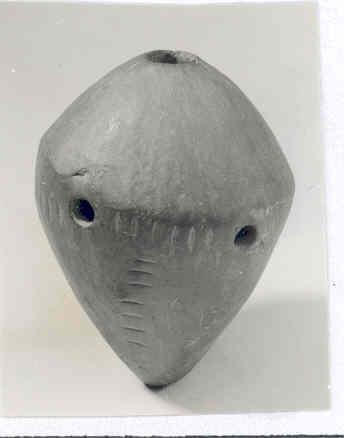Runik on:
[Wikipedia]
[Google]
[Amazon]
Runik () is a village in the
 It is located the
It is located the
Skenderaj
Skenderaj ( sq-definite, Skënderaji) or Srbica ( sr-Cyrl, Србица) is a List of cities in Kosovo, town and Municipalities of Kosovo, municipality located in the District of Mitrovica, Mitrovica District of Kosovo. According to the 2021 cens ...
municipality of Kosovo
Kosovo, officially the Republic of Kosovo, is a landlocked country in Southeast Europe with International recognition of Kosovo, partial diplomatic recognition. It is bordered by Albania to the southwest, Montenegro to the west, Serbia to the ...
. It is located in the Drenica
Drenica (, ), also known as the Drenica Valley, is a hilly region in central Kosovo, covering roughly around of Kosovo's total area (6%). It consists of two municipalities, Drenas and Skenderaj, and several villages in Klina, Zubin Potok, Mitr ...
region and has 1,585 inhabitants as of 2011. The village has a football club, KF Përparimi Runik. Runik is the site of an important Neolithic
The Neolithic or New Stone Age (from Ancient Greek, Greek 'new' and 'stone') is an archaeological period, the final division of the Stone Age in Mesopotamia, Asia, Europe and Africa (c. 10,000 BCE to c. 2,000 BCE). It saw the Neolithic Revo ...
settlement in Kosovo and the wider region. The excavated finds at the site include a baked-clay ocarina
The ocarina (otherwise known as a potato flute) is a wind musical instrument; it is a type of vessel flute. Variations exist, but a typical ocarina is an enclosed space with four to twelve finger holes and a mouthpiece that projects from the bo ...
, one of the oldest musical instruments which have been in the Balkans and the oldest in Kosovo.
History
In the Ottoman defters of 1455 and 1485 a village is mentioned with the name Runik and in 1485 the village had 31 households Names such as 'Radinha Arbanas', 'Nikolla, son of Arbanas' and 'Stepan, son of Lleshi' indicates an Albanian presence. It is located the
It is located the Drenica
Drenica (, ), also known as the Drenica Valley, is a hilly region in central Kosovo, covering roughly around of Kosovo's total area (6%). It consists of two municipalities, Drenas and Skenderaj, and several villages in Klina, Zubin Potok, Mitr ...
region, about southwest of Mitrovica and northwest of Skenderaj (near the Skenderaj-Istog road). The site, one of the most prominent Neolithic sites in Kosovo
This is a description of Neolithic sites in Kosovo. The warm, humid climate of the Holocene which came soon after the ice melting of the last glacial period brought changes in nature which were reflected in humans, flora and fauna. This climatic s ...
to date, contains artefacts from the Starcevo, Cardial and Vinca cultures. As of 2020, the two oldest sites of Starcevo are Crkvina near Miokovci, runik Kosovo which are statistically indistinguishable to each other and have been dated to ca. 6238 BCE (6362-6098 BCE at 95% CI) and ca. 6185 BCE (6325–6088 BCE at 95% Cl) respectively.
It was excavated in 1966-68 and in 1984. Research was conducted in about 35 private parcels in the Dardania neighborhood of Runik. Starcevo and Vinca pottery fragments dating to 6500-3500 BC have been found at the site. A magnetic survey was conducted at the site in March 2010, and the remains of huts reinforced with wooden joists have been found. Monochrome pottery decorated with red gloss, Cardium pottery
Cardium pottery or Cardial ware is a Neolithic decorative style that gets its name from the imprinting of the clay with the heart-shaped shell of the '' Corculum cardissa'', a member of the cockle family Cardiidae. These forms of pottery are ...
, barbotine
wikt: barbotine, Barbotine is the French for slip (ceramics), ceramic slip, or a mixture of clay and water used for moulding or decorating pottery. In English the term is used for three different techniques of decorating pottery, though in all cas ...
earthenware and ceramic pottery painted with linear and geometric designs have been found, along with anthropomorphic figurines and cult tables (small altars). Ornamental artifacts include a spiral baked-clay vase tinted with ocher
Ochre ( ; , ), iron ochre, or ocher in American English, is a natural clay earth pigment, a mixture of ferric oxide and varying amounts of clay and sand. It ranges in colour from yellow to deep orange or brown. It is also the name of the col ...
, painted in dark colors and decorated as the palm of a hand. A significant find is a baked-clay ocarina
The ocarina (otherwise known as a potato flute) is a wind musical instrument; it is a type of vessel flute. Variations exist, but a typical ocarina is an enclosed space with four to twelve finger holes and a mouthpiece that projects from the bo ...
in length, known as the Runik Ocarina, the oldest musical instrument found in Kosovo to date.In the village lay also the ruins of the medieval church ''Shen Gjergj'' (Saint George).
References
Bibliography
* * {{DEFAULTSORT:Runik Populated places established in the 7th millennium BC 1966 archaeological discoveries Villages in Skenderaj Archaeological sites in Kosovo Archaeology of Illyria Illyrian Kosovo Starčevo–Körös–Criș culture Neolithic sites of Europe Drenica